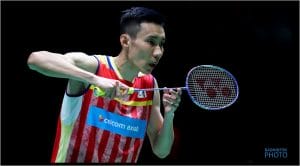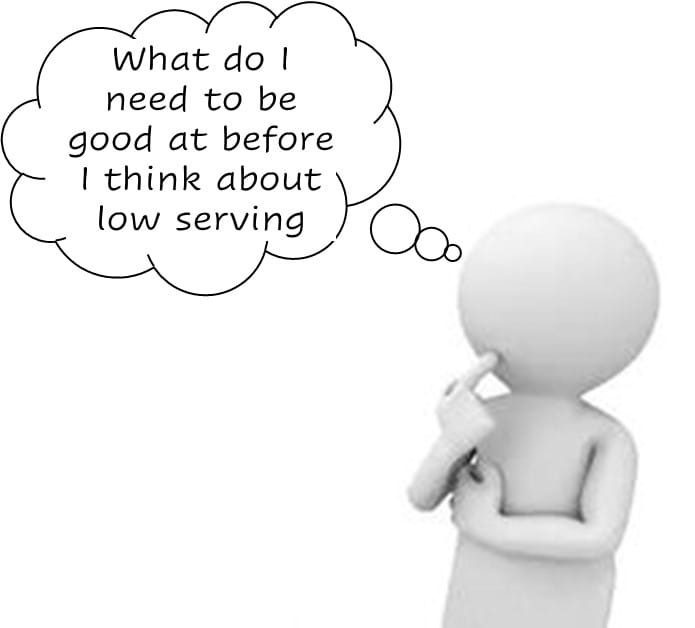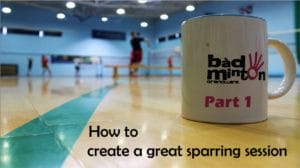When is the best time to discover how to use a single’s low serve?
Low serving in singles can be a great tactic if used well,
But it can also cause you lots of difficulties if you are not prepared
I think everyone should experience low serving in singles
And it’s not always just about serving
I was asked this question by a young player (aged 13yrs) and I struggled to know how to give an effective answer
“I want to start low serving in my singles matches but I’m not sure what to do, can you help me?”
Soon after a coaching friend asked a similar question
“What are the factors that I need to consider when asking my players to start using a low serve in singles?”
– – – – – – – – – – – – – – – – – –
Here are 6 ways to help you
1. Start with a plan or you may be frustrated
2. Assess your existing skills
3. Mindset is critical
4. Tactical considerations
5. Practice vs Competition
6. Receiving wisdom – It’s all a learning journey
– – – – – – – – – – – – – – – – – –
1. Start with a plan
If you start low serving in singles and expect to be immediately successful, you may be disappointed, even frustrated.
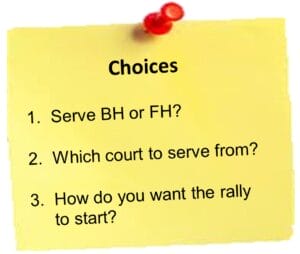 You can prepare your skills before starting to low serve. In practice use lots of mini rallies that all start with you striking a push/block to the net. This will help develop your use of stances and the transitions required immediately after.
You can prepare your skills before starting to low serve. In practice use lots of mini rallies that all start with you striking a push/block to the net. This will help develop your use of stances and the transitions required immediately after.
It will also help your movement skills as they are generally different from those used after high serving.
Certainly, your speed of thought skills will benefit from using ‘player starts’ in practice.
How would you answer these questions?
- Will you start by low serving using a forehand or backhand serve?
- Which side of your court (your FH or BH) will you have the most potential problems?
- Will low serving affect the start of the rally compared to starting with a high serve?
Think carefully about what you are likely to experience,
What skills do you need before starting to use your singles low serve
– – – – – – – – – – – – – – – – – –
2. Assess your existing skills
What do you think are the skills you need to be good at before starting to low serve?
- Moving to the backcourt – Comfortable and preferable fast at moving backwards into the rear court. Especially into your Round The Head courts (link). You also need to be proficient in the deep rear court forehand, having an ability to play a range of strokes at or just below head height.
- Moving forwards towards the net – having a strong preferably fast initial movement towards the net. Plus the ability to flick (quick lifts) towards the opponent’s rear court.
- Changing stances quickly – this depends on how you serve, FH or BH. Not only must you be proficient at changing stances, but you must be competent at understanding when and what stances to use. If you want to read more about badminton stances click here
- Tactical ideas – being good at considering where to serve to and how you want the shuttle to fly. This is a component of the ritualistic behaviour you will need to prepare for low serving or any serve or return of serve situation.
- Reacting & anticipating – have you practiced with lots of indecision and uncertainty in your previous practices. You will need to have started to develop quick thinking skills.
If you had to decide which was the most important of all the above,
which would you decide and why?
– – – – – – – – – – – – – – – – – –
3. Mindset is critical
It’s important in any serving or receiving situation to have a clear goal of what you would like to happen next.
Of course whatever you plan for may not happen, but the intent of your original action could still assist you. You must prepare to low serve with the intent of how you want to act at the start of the rally. To do otherwise would be foolish.
Consider what mindset a low serve in singles requires
Are there any general thoughts or themes a player could/should be thinking about before serving?
I recommend that you …
- Create a ritual before serving – it’s as important as the technique you are trying to master.
- Include some key phrases – words that inspire your next few movements: “let’s go!” ; “fast & quick to whatever happens” ; “get to the shuttle early & pressure them”.
- Include some physical moments – small rituals with your body that help prepare/settle yourself to low serve and move! Some people move in a set way into their stance, others touch their shirt, and others have synchronised racket arm and shuttle position before serving.
Look at great players & identify if they have a preparation ritual
Start to develop your ritual & mindset, it will help 🙂
– – – – – – – – – – – – – – – – – –
4. Tactical considerations
When you start to develop your low serve you will need to be aware of some new serving tactics.
I recommend that you consider and try these out
- Not serving to the service line – aim to make the shuttle land approximately 1m (3ft) beyond the service line.
- Serving towards their backhand racket face – try to force your opponents to play with a backhand racket face.
- Standing further back in court – position yourself further back than you would when serving in a doubles match.
- Striking fast and quick – aim to make the shuttle fly quickly and flat over the net. Striking it slightly harder should prevent the shuttle from ‘popping up’ making it easier for the opponent to kill.
- Starting only your BH court – does it make a difference to you and your next stroke when you compare serving from each of the court sides?
What advantages could the above tactics give you?
Are they worth trying out in your next practice?
– – – – – – – – – – – – – – – – – –
5. Practice vs Competition
It’s best to start in a controlled environment, one where you have some control but also the real variations that happen in a match.
This is maybe the most obvious tip when starting to try out and develop your singles low serve.
Do not start in a competition, start in practice first! 🙂
In Practice – try these ideas
- Use your new serve in a game against someone who you know you can beat or who is at your standard.
- Be prepared to either not worry about the score, or change back to your normal serve (high/flick) if you want the confidence of winning some points.
- Play some conditioned games such as ‘Low serving only’ or ‘Each person has 5 serving rallies followed by 5 receiving rallies’. LINK
- Try out new rituals – consider those in point 4 above.
- Try out new tactics – consider those in point 4 above.
In Competition- try these ideas
- Use your new serve in a game against someone who you know you can beat or have beaten before.
- Change back to your normal serve (high/flick) if you need to.
- Only low serve from your backhand side (the left court if you are right-handed).
- Remember to try out new rituals. It’s important to take your time in between rallies….. for more advice click here
– – – – – – – – – – – – – – – – – –
6. Receiving wisdom – It’s all a learning journey
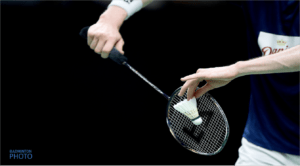
There is certainly a lot to learn when you start developing your singles low serve.
Hopefully, the points above will help, but there are many more.
I recommend that you talk with other players to find out how they developed. Don’t forget to ask about what thoughts they have in their minds as they prepare to serve. This question is often more interesting and useful than asking for some technique tips.
I recommend that you read these two posts below and start your journey to develop a great single low serve weapon.
Don’t forget to think about the art of returning a singles low serve. The image below of LCW will send you to a post specifically about how to improve your return of a low serve. I recommend that you read it soon 🙂
